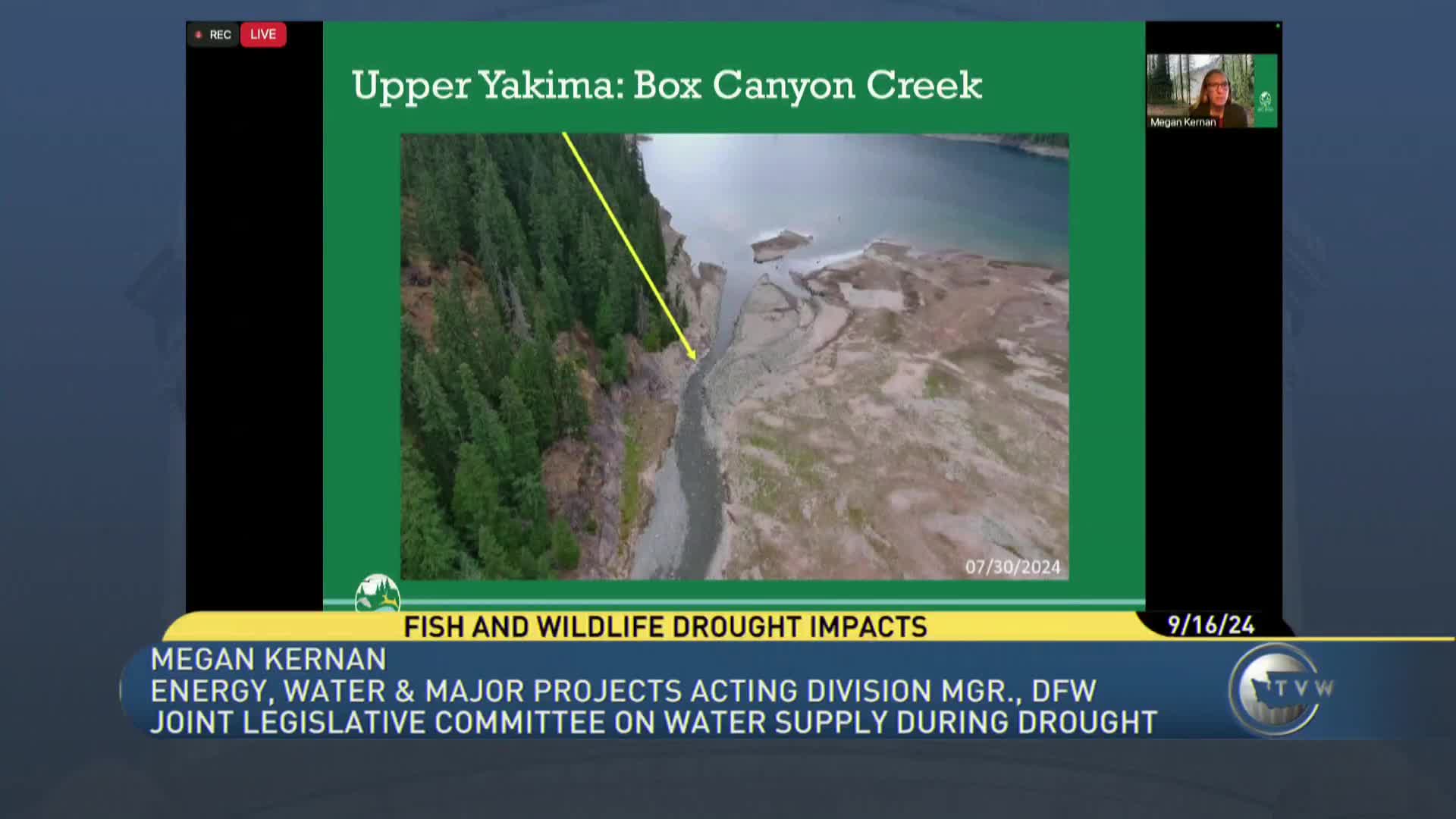Conservationists tackle fish passage crisis with innovative flume
September 16, 2024 | Joint Legislative Committee on Water Supply During Drought, Joint, Work Groups & Task Forces, Legislative Sessions, Washington
This article was created by AI summarizing key points discussed. AI makes mistakes, so for full details and context, please refer to the video of the full meeting. Please report any errors so we can fix them. Report an error »

In a recent government meeting, officials discussed significant environmental changes affecting local fish populations, particularly bull trout, due to shifting stream conditions. Observations from a series of photographs taken throughout the summer revealed that streams have become rockier and shallower, with some areas going subsurface, creating barriers for fish migration.
To address these challenges, a collaborative effort involving local partners, including KRD and ROSA, led to the construction of a flume designed to facilitate fish passage. This flume, constructed using hay bales and plastic sheeting, aims to maintain water depth and prevent it from going subsurface, ensuring that bull trout can reach their spawning grounds. Biologists will monitor the area regularly to assess the effectiveness of this intervention and ensure the flume remains functional.
The meeting also highlighted broader environmental impacts, including recreational rock dams that have created additional barriers for fish, leading to strandings and pre-spawn mortality in certain creeks. Hatcheries have faced challenges due to warm water temperatures, prompting the purchase of oxygenation units to support fish rearing. Additionally, low water flows on the Olympic Peninsula have resulted in revised fishing regulations to alleviate pressure on fish populations until conditions improve.
Overall, the discussions underscored the ongoing efforts to mitigate the effects of environmental changes on local wildlife and the proactive measures being taken to support fish migration and health in the region.
To address these challenges, a collaborative effort involving local partners, including KRD and ROSA, led to the construction of a flume designed to facilitate fish passage. This flume, constructed using hay bales and plastic sheeting, aims to maintain water depth and prevent it from going subsurface, ensuring that bull trout can reach their spawning grounds. Biologists will monitor the area regularly to assess the effectiveness of this intervention and ensure the flume remains functional.
The meeting also highlighted broader environmental impacts, including recreational rock dams that have created additional barriers for fish, leading to strandings and pre-spawn mortality in certain creeks. Hatcheries have faced challenges due to warm water temperatures, prompting the purchase of oxygenation units to support fish rearing. Additionally, low water flows on the Olympic Peninsula have resulted in revised fishing regulations to alleviate pressure on fish populations until conditions improve.
Overall, the discussions underscored the ongoing efforts to mitigate the effects of environmental changes on local wildlife and the proactive measures being taken to support fish migration and health in the region.
View full meeting
This article is based on a recent meeting—watch the full video and explore the complete transcript for deeper insights into the discussion.
View full meeting
